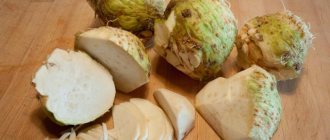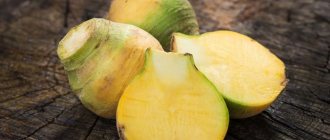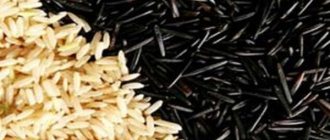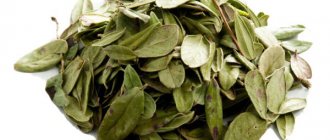Products with high sorbitol
Sorbitol occurs naturally in significant quantities in fruit juices and fruit juices.
The additive can be semi-artificially obtained from glucose syrup, can be extracted from wheat, potato. The additive is used as a low-calorie sweetener, humectant, filler, texturizer, or fat replacer in confectionery, candy, baked goods, diabetic jams, nutrition bars, crushed, chewing gum, diet soft drinks, surimi, or cooked sausages. E420 can be used as a sweetener in toothpaste, mouthwash, medicinal syrups, lozenges, vitamin and mineral supplements, or medications.
In the European Union, sorbitol is designated as E-number E420.
Application of sorbitol
Due to its properties, sorbitol is often used as a sugar substitute in the production of dietary foods and drinks, chewing gum, confectionery, jelly, marshmallows, candies, canned fruits and vegetables, minced products, and soft drinks. With its ability to draw moisture from the air (hygroscopicity), sorbitol prevents premature hardening and drying out of foods.
In pharmaceuticals, sorbitol is used as a structure former and filler in the manufacture of gelatin capsules, vitamin preparations, creams, ointments, pastes, and cough syrups. Also used in the production of vitamin C (ascorbic acid).
In addition, sorbitol is used as a hygroscopic substance in the cosmetics industry (production of creams, toothpastes, masks, powders, deodorants, lotions, shower gels, shampoos), as well as in textile, leather, tobacco, paper and chemical industries.
Experts from the European Society for Food Additives have given sorbitol (E 420) the status of a food product approved for use and safe for human health.
Possible Benefits of Sorbitol
Tooth decay: sorbitol does not promote the development of caries.
Diabetes mellitus: E420 has a low glycemic index (GI = 9) and does not significantly increase blood insulin levels. However, it is questionable whether sorbitol is a good sugar substitute since it often causes bloating.
Manufacturers do not recommend consuming more than forty grams of the supplement per day, so as not to provoke discomfort in the stomach. Among the beneficial properties of sorbitol syrup, I would like to note the following: after assimilation of E420, the body ceases to need insulin, is absorbed much more actively compared to glucose, has an anti-ketone effect, stimulates the process of glycogen accumulation in the liver, has a stimulating effect on the production of gastric juice, accelerates the process of bile outflow, accelerates restoration processes of the liver after serious illnesses, saturates the body, has a positive effect on the shelf life of various products.
Is there a daily or one-time dosage for sorbitol?
There are no official recommendations or restrictions on the consumption of sorbitol. However, it is worth emphasizing again that due to the fermentation of sorbitol predominantly in the colon, large amounts cause bloating, flatulence and diarrhea.
Why not then establish the dose in grams at which these side effects begin? The fact is that not everyone will experience these negative disorders at the same dosage. It all depends on individual characteristics, the condition and ratio of natural bacteria in the intestines (microflora), type of nutrition and many other factors. There is only an approximate limit of 50 grams, and if a product contains more than that, there should be a warning on the packaging about possible laxative effects.
Side effects, dangers
The supplement attracts water from the intestinal wall (osmotic effect), so it can cause diarrhea if consumed in excess. According to one source, the lactation threshold for a single dose of sorbitol in healthy men is 0.17 g/kg, and in women it is 0.24 g/kg body weight, or up to about 50 g per day.
In one study in healthy people, sorbitol at a dose of 27 grams only caused excess gas (flatulence).
Sorbitol sensitivity or intolerance due to malabsorption: Individuals with fructose malabsorption often also have E420 malabsorption, which can cause the same symptoms as fructose (bloating, pain or cramping, loose stools, diarrhea leading to unintentional weight loss, constipation, excessive belching and headache). The supplement may also cause stomach symptoms in individuals with large intestinal bacterial overgrowth (SIBO) and those diagnosed with irritable bowel syndrome.
Individuals with hereditary fructose intolerance should avoid sorbitol syrup as it is metabolized to fructose, which cannot be metabolized further, so it accumulates in the liver, leading to hypoglycemia and severe gastrointestinal symptoms.
Note: Sorbitol sensitivity, malabsorption or intolerance does not provoke an allergic reaction (rash, hives) to sorbitol. An allergy to sorbitol is not likely. Important: the use of sorbitol in food is strictly contraindicated for children under one year of age.
Among the main disadvantages, it is worth highlighting the following: can provoke mild attacks of dizziness, heartburn, flatulence, nausea; high-calorie additive; compared to sucrose E420 is less sweet; has an unpleasant metallic taste.
How to get glucite
Sorbitol was originally obtained from the fruit of the rowan tree (Sorbus aucuparia), which contained up to 12% of the active ingredient. Sorbitol is found in many other fruits and especially in varieties of corn. The highest concentrations of sorbitol are found in pears, plums, apples, apricots and peaches. Berries, citrus fruits, pineapple and grapes contain very little sorbitol.
Commercially, sorbitol is produced from glucose, which is obtained from corn and wheat starch; glucose is then converted to glucite by catalytic hydrogenation.
Properties of sorbitol
E420 is a white crystalline powder, less sweet than sucrose and has a strong cooling effect. Very hygroscopic - easily attracts moisture. A good humectant – helps foods resist changes in humidity. Solubility in water at 77°F (25°C) = 70 g/100 g solution or 235 g in 100 ml water. Melting point = 207°F (97°C). Temperature resistance >320°F (>160°C).
Sorbitol is a substance that has a pleasant taste. It dissolves perfectly in water. It is found in large quantities in red rowan berries. This is the Latin name, which means the name of this tree. However, its production is based on corn-based starch. In pharmacology, sorbitol is called a glucide; in the food industry it is used as an additive E 420. It resembles small solid crystals, odorless. Compared to sugar, its taste in sweetness is 2 times higher.
Contraindications and harm of sorbitol
Despite the reduced calorie content and protection against spikes in blood sugar, as well as other benefits of sorbitol, its harms also need to be taken into account.
Firstly, the product should be consumed in limited quantities. The maximum daily dose of sorbitol is 40 grams. In addition, it is not recommended to use a sweetener on an ongoing basis: after 3-4 months of constant use, you should take a long break and switch to another sweetener. If you use sorbitol according to these instructions and in the absence of health problems, the sweetener will not cause harm.
With uncontrolled use of the sorbitol sweetener or its use in the presence of contraindications, many unpleasant symptoms can be observed:
- From the gastrointestinal tract: flatulence, pain, nausea, vomiting, metallic taste in the mouth;
- From the cardiovascular system: rapid heartbeat;
- From the genitourinary system: problems with urination.
In addition, classic signs of a cold may appear: rhinitis, chills, headache. If any of these symptoms occur, you should consult a doctor.
Sorbitol can cause severe harm if:
- Irritable bowel syndrome;
- Abdominal dropsy;
- Fructose intolerance;
- Gallstone disease.
Therefore, for these diseases and conditions, the sugar substitute sorbitol is strictly contraindicated.
In addition, the product should be introduced into the diet with caution in the presence of certain diseases, especially the cardiovascular tract and digestive system. If you have any health problem, you should definitely consult your doctor first.
You should also consider the possibility of individual intolerance to the sweetener. For this reason, gradually and carefully monitoring the body’s reaction, it is worth introducing it into the diet of people prone to allergies, pregnant and lactating women, and young children.
Note! Sorbitol is 2 times less sweet than sugar, so there is a high probability of going overboard with the amount of the former.
- Related article: The benefits and harms of stevia
Benefits of sorbitol
The substance is a natural sweetener, emulsifier, color stabilizer, it excellently retains moisture and has dispersing properties. Almost completely absorbed by the body. Considering it against other sweeteners, it is the most nutritious. The calorie content of sorbitol is low, only 4 kcal. Scientific research has established that after regular use of this supplement, metabolic processes within organs are normalized. It is sweet, but does not contain sugar, which allows it to be used by people prone to diabetes or patients with this pathology. After heat treatment, its beneficial properties are preserved, which makes it possible to use it for cooking.
This substance is perfect as an additive in confectionery products, chewing gum, and also in dietary products. It maintains the moisture content of food as it has the property of retaining moisture for a long time. In the pharmaceutical field, sorbitol is used as a filler in vitamin preparations, capsules, ointments, pastes and creams. It is no less widely in demand in the cosmetics industry for the production of creams, powders, toothpastes, shampoos and deodorants. Also in the manufacture of leather goods, paper production, tobacco production, and in chemical production processes.
It has a laxative effect, since after consumption in quantities over 50 grams there may be flatulence and indigestion. In medical practice, it is also used in the treatment of stool retention. For alcohol intoxication of the body, the use of the substance also takes place.
Instructions for use of sorbitol
The substance has the following properties: choleretic, antispasmodic and deintoxicating. Sorbitol is perfectly absorbed and saturates the body, while compensating for B vitamins: pyridoxine, biotin and thiamine. It helps strengthen intestinal flora. Its properties are preserved even after heat treatment.
It can also be used for canning vegetables and fruits, juices, drinks, canned fish and meat. In medicine it is used for chronic cholecystitis, impaired bile outflow, constipation, colitis, enterocolitis, hypoglycemia and diabetes. To cleanse the liver. Since it is a choleretic There is an effect from the product, then with its help you can cleanse the kidneys, liver and bile ducts.
This procedure helps to normalize the function of bile secretion, but if there are stones in the internal organs, sorbitol should not be used. For internal use to cleanse internal organs, you should additionally use rose hips; only this composition will give a good result. To prepare the medicine, you need to take dry fruits and grind them, then pour boiling water over them in a thermos and leave overnight. In the morning, add sorbitol to the infusion and drink on an empty stomach. This procedure is not recommended to be done at night, as the body should rest and not work.
Such treatment must be accompanied by a certain diet and a healthy lifestyle, such as exercise or regular walks in the fresh air. This procedure causes a laxative effect, so it is better to do this while at home on vacation. At this time, microelements will be additionally washed out of the body: calcium and potassium, so you should simultaneously eat foods rich in them. In any case, before starting such treatment, you need to consult a specialist. Feelings of weakness, headaches, dizziness and cramps are possible.
Contraindications
Use should be avoided in case of hypersensitivity or allergic reactions to the substance, as well as in cases of intestinal irritation, acute colitis, ascites and cholelithiasis and individual intolerance to the product. Diabetic retinopathy and neuropathy may also occur with an overdose of the product. When used in excess quantities, diarrhea, pain in the gastrointestinal tract, gas formation may occur, and the absorption of fructose may worsen. No side effects were identified when interacting with other medications.
You might also like:
E951 (aspartame) - effect on the body, harm or benefit E-509 (Calcium Chloride) food additive - harm or benefit to the human body E250 (Sodium Nitrite) - harm and benefit of the food additive for the human body E220 (Sulfur Dioxide) - harm and benefits for the human body Rating of the best proteins 2020 - which ones to choose Propylparaben in cosmetics: what is it - benefits and harms Lipohydroxy acid - beneficial properties and contraindications - application
Sorbitol (from Latin Sorbus
- rowan) or sorbitol syrup is usually called a food additive that is part of the group of thickeners and emulsifiers. In the international classification, the substance is assigned the index E420; the additive has the properties of a sweetener and a moisture-retaining agent.
General characteristics of Sorbitol
Sorbitol, sorbitol syrup looks like a white powder, small transparent crystals or thick syrup, is odorless, tastes sweet with a metallic aftertaste (calorizator). The substance dissolves well in and. Chemical formula C 6 H 14 O 6.
The main supplier of natural sorbitol is, from the berries of which sorbitol was first isolated in 1868; some types of seaweed also contain some amounts of sorbitol. Sorbitol of chemical origin is an intermediate product of synthesis, isolated from glucose during the hydrogenation process. The human body is capable of producing sorbitol on its own.
Benefits and harms of E420
Regular is almost twice as sweet as Sorbitol, so the use of sorbitol is recommended for people with diabetes. The substance has the ability to stimulate the secretion of gastric juice and significantly improve the flow of bile; the body absorbs sorbitol faster than glucose, and does not require insulin. Sorbitol syrup partially replaces, thereby reducing the need for them. Sorbitol has laxative properties, so it is often included in medications or dietary supplements that have a laxative effect. You should be aware that increasing the dose of sorbitol leads to severe flatulence.
The daily intake of sorbitol has not been officially established, but doctors do not recommend exceeding a dose of 30-40 g per day, otherwise unpleasant symptoms such as heartburn, nausea, dizziness and allergic reactions may occur. E420 is a high-calorie product, so those watching their weight should use it with caution or avoid the supplement altogether. A contraindication for the use of sorbitol is age under 1 year.
Application of E420
Sorbitol, sorbitol syrup is used in the food industry as a sweetener, complexing agent and texturizer in the production of confectionery and bakery products, as a moisture-retaining agent - mainly in the process of processing meat products. The main application of E420 is food for diabetics: chocolate, jams, breakfast cereals and low-calorie ice cream.
Sorbitol is included in sauces, mustard, jellies and desserts, some liqueurs, and many dietary supplements. In addition to the food industry, sorbitol is used in cosmetology and the production of shampoos, toothpastes, cigarettes, in pharmacology and paint and varnish production.
Price
Glucite (weight loss powder, tablets) or its analogues can be bought at the pharmacy, as well as in specialized stores.
Advice! Diabetics (especially children) should consult a qualified professional before using a sweetener. Long-term use of the sweetener may disrupt the normal functioning of the gastrointestinal tract (GIT). It is strictly forbidden to exceed the established daily dose, as there is a risk of developing severe diarrhea and gas formation in the intestines.
Glucite can cause severe dyspepsia if consumed in excess. It is important for the patient to adhere to the dose and consult a doctor if adverse effects occur. Timely elimination of complications helps prevent fatal consequences.
Interesting:
- Halva for type 2 diabetes: can you eat it and what should you consider when choosing a product?
- Is it possible or not to eat prunes if you are diagnosed with type 2 diabetes mellitus, composition, beneficial properties, harm and contraindications
- Methods for preparing sweets for diabetics so that they do not cause harm
- Beneficial properties of flaxseed oil and how to take it for diabetes
- The benefits and harms of sweeteners for diabetes or what you need to know about sweeteners?
- Indications for the use of bean leaves for type 2 diabetes mellitus, contraindications, side effects, beneficial properties, potential harm and recipes
- Mechanism of action of sodium cyclamate, potential benefits and harms, indications, contraindications, daily dosage, price











